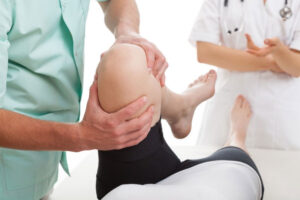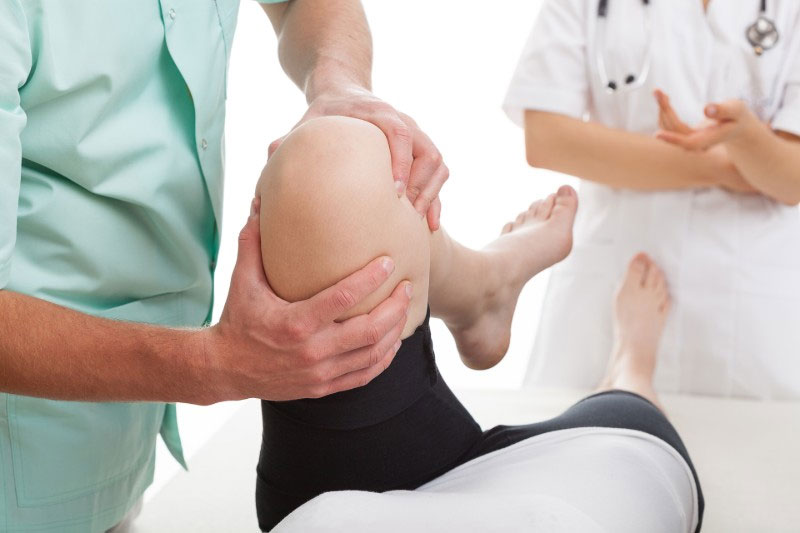Any injury or condition affecting the bones, muscles, or joints can cause debilitating ongoing pain and a significant decline in quality of life. Many times, injuries can take months or even years to heal completely when not properly treated. Similarly, health conditions that result in bone or muscle deterioration cause life-long symptoms that require ongoing management.
As the opioid epidemic continues to affect the entire country, physicians are turning away from pain medications and helping patients find other solutions for chronic pain. Many people with injuries or bone and joint conditions avoid exercise in fear of worsening the condition. However, the right types of motion can actually improve and even eliminate pain and other symptoms associated with these conditions. Orthopedic physical therapy is one method of treatment that can be used to treat chronic pain related to both injuries and medical conditions.
 How Orthopedic Physical Therapy Works
How Orthopedic Physical Therapy Works
Orthopedic physical therapy is a treatment for bones, muscles, tendons, ligaments, or joints that aren’t functioning properly. Each part of the musculosketal system has a job to help perform the full range of strength and mobility of the human body. When one or more of these components aren’t working properly, the result is pain and decreased motion.
- The practice of orthopedic physical therapy uses many methods to improve strength and flexibility to areas that are affected by injury or illness. An orthopedic physical therapist may use tools to assist with movement, improve circulation, or reduce pain such as heat and/or ice to reduce pain and/or swelling
- Support devices like a walker or cane
- Electrical stimulation or ultrasound to diminish pain
- Exercise equipment to improve strength
- Evaluation tools to diagnose conditions and chart progress
While tools are often helpful to assist severely limited movement and reduce pain, physical exercise is the fundamental element of the practice. Your therapist might use assisted movement techniques until you are strong enough to perform exercises on your own. Many patients even begin therapy with a physical therapist in a doctor’s office, then continue performing exercises at home to continue improvement of strength and mobility. Some exercises performed in an orthopedic physical therapy session may include:
- Assisted exercise to improve proper movement and assist flexibility
- Balance exercise to build strength
- Strengthening exercises to build muscle surrounding damaged bones, joints, or tissue
- Stretching and flexibility exercises
- Endurance exercises for continued improvement
- A range of function and mobility exercises to return a full range of motion and strength to the affected area.
 Conditions Improved by Orthopedic Physical Therapy
Conditions Improved by Orthopedic Physical Therapy
Since the musculoskeletal system covers practically the entire body, conditions found in the arms, legs, hands, feet, back, and neck could all benefit from orthopedic physical therapy. Doctors may recommend the treatment for improved recovery after surgery or injury, medical conditions affecting joints and muscles, and long-term medical conditions that restrict movement. Here are a few common conditions throughout the body that may improve with orthopedic physical therapy.
- Arthritis and Osteoarthritis
- Back pain
- Bursitis
- Carpal Tunnel Syndrome
- Bicep tendon tear
- Whiplash
- Hip replacement
- Tennis elbow
- Sciatica
- Repetitive stress injuries
- Recovery from surgery
- Tendonitis
Assisted movement and continued rotation work to improve range of motion that becomes limited due to illness or injury. Stretching improves flexibility which often relieves pain throughout the body. Physical therapy also builds strength in areas recovering from injury, surgery, or deterioration. This increased strength can work to heal the area to original strength or build surrounding muscle tissue to help support the area and prevent re-injury.
How Long Does Recovery Take?
The duration and type of orthopedic physical therapy you use often depends on the condition being treated. The success of all types of physical therapy is measured by goals met instead of the time spent in therapy. While most soft tissue injuries heal within six to eight weeks, some types of surgery require at least a year of recovery time. Orthopedic physical therapy works by using the right amount of exercise to help patients regain strength without risking re-injury.
. Patient participation is vital for the success of orthopedic physical therapy. The effort you apply to correctly performing exercises inside the office and at home can greatly impact your recovery time. Sometimes, a patient is struggling with a long- term condition with flare-ups like sciatica or arthritis. In these types of cases, exercises might be continued at home indefinitely for successful pain management.
Physical Therapy vs Surgery or Medication
Orthopedic physical therapy may replace medication or surgery in offering pain relief and increased mobility. A two-year study of patients suffering from spinal stenosis showed the same results between patients who underwent a surgical procedure and those who participated in six weeks of physical therapy.
Getting Started with Orthopedic Physical Therapy
 If you have a condition that might benefit from orthopedic physical therapy, your doctor can help. Often, physical therapy is prescribed as part of a treatment regimen or as a recovery method from injury or surgery. However, if you suffer from a painful or limiting condition that might benefit from orthopedic physical therapy, discuss your options with your doctor. If you’re not currently seeing a physician, search for an orthopedic center in your area and ask questions about the therapy services available. For more information about the benefits of orthopedic physical therapy, contact us today. The Chicago Center for Orthopedics at Weiss Memorial Hospital offers a full line of orthopedic services to diminish pain, increase mobility, and improve the quality of life for our patients.
If you have a condition that might benefit from orthopedic physical therapy, your doctor can help. Often, physical therapy is prescribed as part of a treatment regimen or as a recovery method from injury or surgery. However, if you suffer from a painful or limiting condition that might benefit from orthopedic physical therapy, discuss your options with your doctor. If you’re not currently seeing a physician, search for an orthopedic center in your area and ask questions about the therapy services available. For more information about the benefits of orthopedic physical therapy, contact us today. The Chicago Center for Orthopedics at Weiss Memorial Hospital offers a full line of orthopedic services to diminish pain, increase mobility, and improve the quality of life for our patients.

